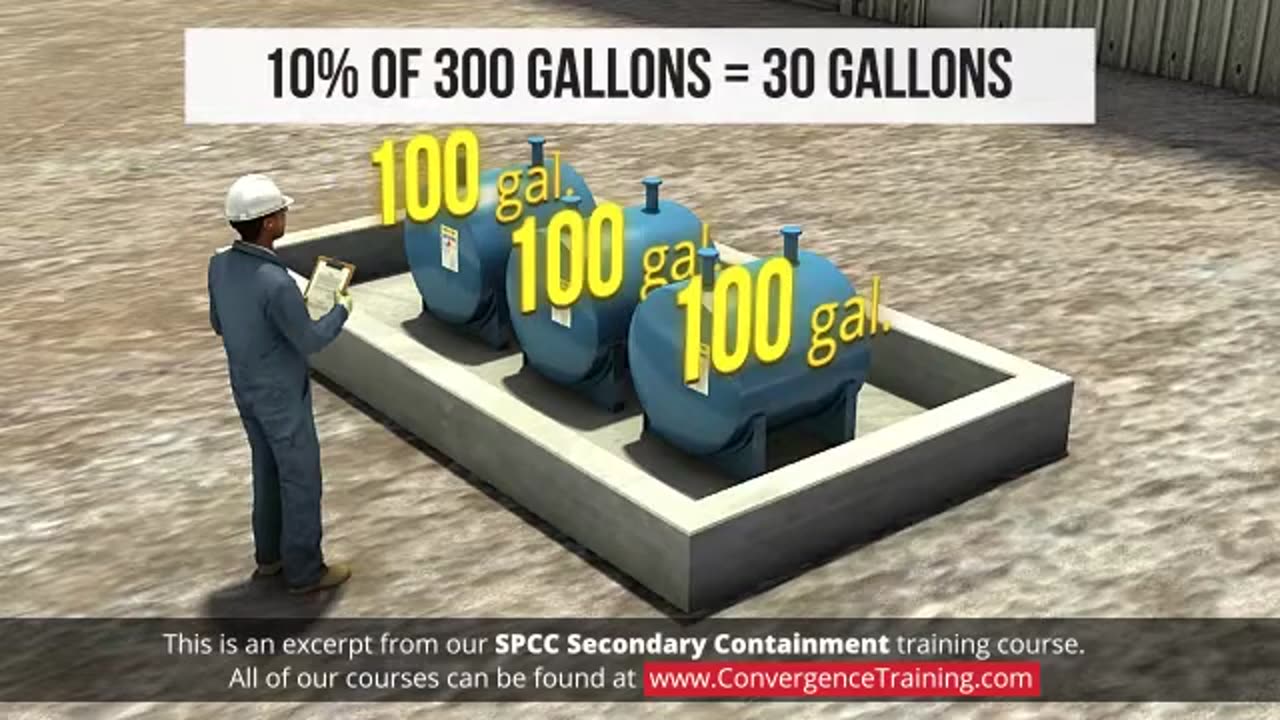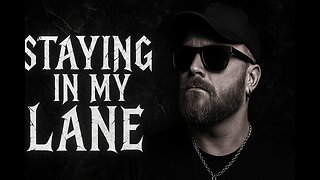Premium Only Content

SPCC Secondary Containment Training
### **SPCC Secondary Containment Training**
This training focuses on compliance with the Spill Prevention, Control, and Countermeasure (SPCC) rule’s requirements for secondary containment. Participants will learn the importance of secondary containment systems, best practices for design and maintenance, and how these systems prevent oil discharges into navigable waters and adjoining shorelines.
---
### **Training Objectives**
1. Understand SPCC rule requirements for secondary containment.
2. Learn how to design and size secondary containment structures.
3. Identify key maintenance and inspection practices.
4. Train staff on emergency response procedures involving secondary containment systems.
---
### **Key Training Modules**
#### **1. Overview of the SPCC Rule**
- **Purpose of the SPCC Rule**
- Preventing oil spills from reaching navigable waters or adjoining shorelines.
- **Applicability**
- Facilities with oil storage exceeding 1,320 gallons aboveground or 42,000 gallons underground.
- **SPCC Secondary Containment Requirements**
- General Secondary Containment: Required for all oil-handling operations, including transfers and storage.
- Specific Secondary Containment: For bulk storage tanks, sized to capture the largest potential spill.
---
#### **2. Design of Secondary Containment Systems**
- **Types of Secondary Containment**
- **Active Systems:** Manual interventions, such as deploying absorbents or shutting valves.
- **Passive Systems:** Built-in structures like berms, dikes, or double-walled tanks.
- **Design Considerations**
- Must contain 110% of the capacity of the largest single tank or sufficient freeboard for precipitation.
- Construct with impervious materials (e.g., concrete, compacted clay liners).
- **Sizing Calculations**
- Understand how to calculate containment volume, including accounting for precipitation in open areas.
- Factor in sloped surfaces and drainage systems.
- **Drainage and Flow Management**
- Design containment to prevent stormwater runoff from carrying oil into waterways.
- Install oil-water separators for draining containment areas.
---
#### **3. Inspection and Maintenance of Secondary Containment**
- **Inspection Frequency**
- Conduct routine inspections (weekly, monthly) as outlined in the SPCC Plan.
- Focus on berms, dikes, floor seals, and drainage systems.
- **Common Issues to Look For**
- Cracks, corrosion, or leaks in containment walls.
- Standing water, debris, or oil residues in containment areas.
- **Maintenance Best Practices**
- Repair damaged containment immediately.
- Regularly remove accumulated rainwater or debris from open containment structures.
---
#### **4. Spill Response Procedures**
- **Deploying Secondary Containment**
- How to activate manual systems during transfers or spills.
- Proper use of absorbents and portable containment barriers.
- **Stormwater Management During a Spill**
- Use drain covers or plugs to prevent contaminated water from leaving containment.
- Monitor runoff during and after containment breaches.
- **Emergency Drills**
- Practice response to hypothetical spill scenarios, including containment overflow.
---
#### **5. Compliance and Recordkeeping**
- **Documentation Requirements**
- Keep inspection records, spill logs, and maintenance reports for a minimum of three years.
- Ensure all secondary containment details are included in the SPCC Plan.
- **SPCC Plan Updates**
- Update SPCC plans after modifications to secondary containment systems or tank capacities.
---
### **Interactive Exercises**
1. **Secondary Containment Design Workshop**
- Calculate secondary containment volume for various storage configurations.
- Design a containment structure for a hypothetical facility using SPCC guidelines.
2. **Inspection Simulation**
- Perform a mock inspection of secondary containment systems, identifying potential deficiencies.
3. **Spill Containment Drill**
- Practice deploying absorbents and active containment measures during a simulated spill scenario.
---
### **Training Deliverables**
- **Workbooks:** Include SPCC requirements, design templates, and sample inspection checklists.
- **Sizing Calculators:** Tools for calculating secondary containment capacity.
- **Inspection Checklists:** For routine and periodic inspections.
- **Certificate of Completion:** Issued to participants upon successful completion.
---
### **Best Practices Covered in Training**
- Use double-walled tanks when possible to minimize the need for external containment.
- Ensure compatibility of containment materials with stored oils.
- Develop a stormwater discharge plan, incorporating oil-water separators and filtration systems.
- Train personnel on both routine and emergency response protocols.
---
Would you like help creating detailed training slides, a checklist, or a site-specific SPCC training plan?
-
 7:58
7:58
HSESafetyInformation
5 months agoAuthentic Peshawari Rosh _ Namkeen Gosht Recipe __ Traditional KPK and Baluchistan
621 -
 LIVE
LIVE
PudgeTV
3 hours ago🟢PEAK - Gaming on Rumble | Community Gaming Night
53 watching -
 LIVE
LIVE
Precision Rifle Network
1 day agoS4E23 Guns & Grub - Gear We H8, Politics, & New Optics
111 watching -
 LIVE
LIVE
FatHeadedNoob
2 hours agoStaying In My Lane | Trying Bleak Haven Demo
39 watching -
 18:55
18:55
Tundra Tactical
7 hours ago $0.04 earnedGun Show Weirdos
312 -
 LIVE
LIVE
OVERKLOC
2 hours ago🔴LIVE - AMONG THE SLEEP - CHAT ASKS... CHAT GETS
12 watching -
 3:12:54
3:12:54
Chrono
4 hours agoGoing Bananza! | Donkey Kong Bananza
15 -
 LIVE
LIVE
Hernandez2787
1 hour agoLet's play Arena Breakout for 2nd time.
7 watching -
 LIVE
LIVE
AirCondaTv Gaming
4 hours ago $0.02 earnedCursed Companions - JFG has Never Had a More Cursed Companion than I! (collab)
23 watching -
 55:21
55:21
Donald Trump Jr.
4 hours ago"Publicly" Funded Propaganda Dealt Reality Check, Live! | TRIGGERED Ep.259
138K118